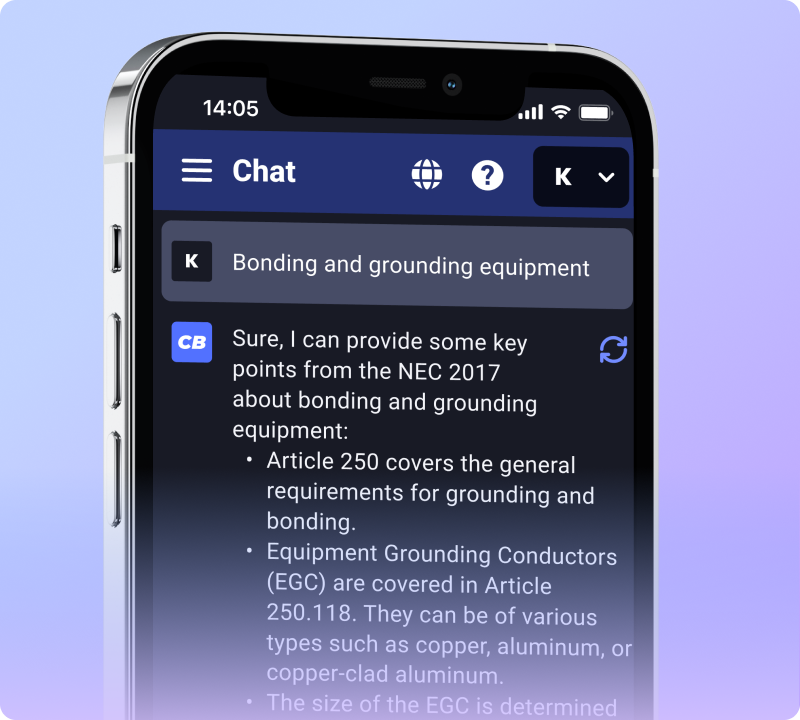Keeping workers safe from electrical hazards is a big challenge in the workplace. The NFPA 70E 2024 update brings new rules for this important work. This article will guide you through these changes, making it easier to keep up with safety needs.
Stay safe and read on!
Key Takeaways
- NFPA 70E 2024 update focuses on better protection against electrical dangers, including changes in arc flash protection and safe work practices.
- Training for electrical workers is now more detailed to make sure they understand new safety standards, with courses available covering the changes.
- Key updates require equipment to be labeled correctly and insist on using updated personal protective gear based on the latest guidelines.
- Employers must adjust their policies and train employees on these new rules to reduce accidents and improve workplace safety.
- New compliance tools, like checklists, help businesses ensure they meet all NFPA 70E 2024 requirements.
Overview of NFPA 70E 2024 Changes
NFPA 70E 2024 has undergone significant changes impacting electrical safety practices in the workplace. Key modifications affect arc flash protection, safe work procedures, and training requirements.
Summary of Major Changes
The NFPA 70E 2024 update brings major adjustments to electrical safety in the workplace. These changes aim for better protection and clear guidelines for electrical workers.
- The update has removed “leather” from the definition of protectors. This means workers need new materials for their personal protective equipment that meet the updated standards.
- Each article now includes a scope section, making it easier to understand what each part covers in terms of electrical safety practices.
- All definitions are now located in Article 100, centralizing important terms for quick reference.
- There’s a renumbering system and added details on testing each phase conductor or circuit part at every point of work. Workers must check every line they will work on more thoroughly than before.
- Updates to arc flash protection requirements include more specific guidelines on what kind of personal protective equipment is necessary based on different work conditions and voltages.
- Modifications in safe work practice procedures emphasize lockout/tagout protocols and risk assessment tactics to reduce accidents.
- Enhanced training and certification requirements ensure that all workers understand the latest safety standards and how to apply them correctly.
- The introduction of a compliance checklist helps employers make sure they meet all new NFPA 70E standards effectively.
These key points highlight how the NFPA 70E 2024 adjustments focus on greater reliability, improved employee safety, and clearer compliance paths for businesses in electrical work environments.
Implications for Electrical Safety Practices
Moving from a summary of the major updates, NFPA 70E 2024’s changes mean big things for how we keep people safe around electricity. New rules focus on making sure workers have better protection against arc flash hazards.
This includes following updated guidelines in Table 130.5(C), which now offer more clarity on the chance of arc flashes with certain equipment and under specific conditions. Workers must pay close attention to these details to avoid electric shock.
Safety is not just a guideline; it’s a way of life when dealing with electricity.
Labels on electrical gear need to last longer and stay readable, no matter if they’re inside or outside, hot or cold. Changes also say that hearing protection is needed as part of reducing risk from loud noises during an arc flash event.
For areas with batteries and battery rooms, there’s now a rule about the heat they give off, making sure those working near them know how to stay safe. Every switch, circuit breaker, and transformer plays a role in safety too.
Workers must use personal protective equipment (PPE) correctly every time they work on or near energized circuits to guard against burns and shocks.
Detailed Analysis of Key Changes in NFPA 70E 2024
NFPA 70E 2024 has updated requirements for electrical safety practices in the workplace. This includes changes to arc flash protection, safe work procedures, and training and certification.
Updates to Arc Flash Protection Requirements
Arc Flash Protection Requirements
DC systems
This means workers need to choose their gear carefully based on the kind of system they are working with, whether it’s direct current or not. It’s crucial for safety and makes sure everyone has the right protection.
Another important change is how we figure out the Arc Flash Boundary distance. Plus, there’s better guidance on picking the correct arc-rated clothing and PPE. The goal here is to keep electrical workers safe by making sure they wear what will protect them best from arcing hazards.
With these updates, workplaces must pay attention to new rules about equipment operating conditions too, which was pointed out in Table 130.5(C). These changes help lower the risks when working near energized parts, ensuring everyone goes home safely at the end of the day.
Modifications in Safe Work Practice Procedures
After learning about updates to arc flash protection, it’s time to focus on how safe work practices have changed. NFPA 70E 2024 has made it necessary for workers to test each phase conductor or circuit part at every point of the job.
This ensures that all team members know exactly where potential hazards might be before starting their tasks.
The rules now also talk about using lasers in a safer way. They put together all the must-knows into one place so workers can easily find and follow them. Plus, there’s a new guide that helps check how well electrical equipment is being kept up.
By moving definitions to Article 100, everyone can understand these procedures better, making workplaces safer when handling fuses, switches, and circuit breakers. This update means less confusion and more focus on keeping everyone safe from electric shock and other dangers.
Enhanced Training and Certification Requirements
After understanding the modifications in safe work practices, it is essential to focus on the enhanced training and certification requirements outlined by NFPA 70E 2024. Jim Phillips, P.E.
offers an 8-hour course covering these changes on February 13-14, 2024, April 24-25, 2024; and July 10-11, 2024. The program ensures a detailed explanation of dual hazards of electric shock and arc flash and emphasizes conditions mandating electrically safe work environments.
Furthermore, it underlines the significance of wearing arc-rated clothing while highlighting the dangers associated with flammable clothing such as polyester when exposed to arc flash incidents.
In addition to strengthening safety measures for electrical workers in compliance with NFPA 70E standards, it is vital to recognize the importance of capacitive training procedures that equip individuals with comprehensive knowledge about potential risks in electrical workplaces while ensuring they have access to reliable resources like toolbox talks via social media platforms for constant skill reinforcement.
Impact of NFPA 70E 2024 on Electrical Workplaces
NFPA 70E 2024 enhances safety for electrical workers. Employers face compliance challenges due to the modifications, while a reduction in electrical accidents is expected.
Improved Safety for Electrical Workers
NFPA 70E 2024 brings better safety for electrical workers by emphasizing stronger provisions on arc flash and shock protection. These changes ensure that the risk of electrical accidents is reduced, promoting a safer work environment.
Employers need to adapt to these new guidelines to prioritize the well-being of their electrical workers. Additionally, revisions in work practices for lasers further enhance workplace safety measures and protect against potential hazards related to laser operations, safeguarding the workforce from harm.
The improved safety measures under NFPA 70E 2024 are crucial for mitigating risks in electrical workplaces and reducing the occurrence of accidents. By prioritizing enhanced protection against arc flash and shock incidents, these changes significantly elevate occupational safety standards within the industry, ensuring a secure working environment for all employees involved in electrical operations.
Compliance Challenges for Employers
Adapting to new NFPA 70E 2024 requirements brings compliance challenges for employers. Aligning internal safety policies and training employees on the updated standards are crucial.
Additionally, adjusting to modified approach boundaries and risk reduction methods is necessary for ensuring workplace safety. Labeling procedures for equipment must also be changed to comply with the new regulations.
For employers, these changes translate into a need for meticulous planning and execution of tailored training programs aimed at enhancing electrical safety in the workplace. Furthermore, it’s essential to navigate within the realm of occupational safety and health administration guidelines and market price fluctuations when implementing these new standards.
Expected Reduction in Electrical Accidents
NFPA 70E 2024’s updated safety measures aim to significantly decrease electrical accidents in workplaces. The emphasis on incident energy analysis and clear guidelines for safe work practices is anticipated to have a substantial impact.
Comprehensive training programs will equip electrical workers with the necessary knowledge, further reducing the likelihood of accidents. Additionally, the renewed focus on proper PPE usage and arc-rated clothing is expected to be an essential factor in minimizing electrical mishaps.
These changes align with the goal of achieving safer work environments for all individuals involved in electrical activities.
The revision anticipates a meaningful decline in workplace incidents by enhancing hazard awareness, improving safety procedures, and promoting compliance with new safety protocols dictated by NFPA 70E 2024.
This proactive approach addresses critical areas, such as incident energy analysis method improvements and comprehensive training programs – integral measures toward mitigating risks associated with electrical work.
By prioritizing these aspects, workplaces anticipate a significant reduction in potential hazards related to electricity.
Training and Compliance Strategies

Opt for structured training programs and resources to impart the necessary skills; read more to explore effective implementation strategies.
Recommended Training Programs and Resources
- NFPA 70E 2024 Electrical Safety Training: This course covers the latest changes in electrical safety practices, emphasizing arc flash protection and safe work procedures.
- OSHA 30-Hour General Industry Course: Provides comprehensive training on recognizing and preventing workplace hazards, including electrical risks.
- Arc Flash Risk Assessment Tools: Utilize software such as SKM Power*Tools or ETAP to analyze arc flash hazards and determine protective measures.
- Certified Electrician Certification Program: Offered by the National Electrical Contractors Association, this program ensures electricians are equipped with advanced skills and knowledge to implement the new safety requirements.
- Electrical Safety Compliance Toolkit: Access resources from the Electrical Safety Foundation International for guidance on implementing NFPA 70E 2024 standards effectively.
Stay tuned for strategies on how to implement these training programs effectively to ensure workplace safety under the new NFPA 70E regulations.
Strategies for Implementing New Safety Measures
To effectively implement the new safety measures required by NFPA 70E 2024, consider the following strategies:
- Regularly conduct training sessions for employees on updated safety protocols according to NFPA 70E 2024 requirements, ensuring comprehensive understanding and compliance.
- Update internal safety protocols and procedures in alignment with the latest NFPA 70E standards, emphasizing the importance of risk assessments and incident energy analysis for all electrical work.
- Ensure that all equipment is properly labeled, maintained, and inspected as per the requirements of NFPA 70E 2024 to mitigate potential hazards.
- Implement a system for tracking and documenting compliance with NFPA 70E 2024 regulations, including maintaining records of training attendance, protocol updates, and equipment maintenance.
- Foster a culture of accountability and awareness among employees regarding electrical safety measures through regular communication, reminders, and incentivizing safe practices in the workplace.
- Collaborate with certified professionals or consultants specializing in electrical safety to conduct thorough audits and provide guidance on aligning with the updated NFPA standards.
- Establish feedback mechanisms where employees can report concerns or observations regarding electrical safety issues, promoting a proactive approach to identifying and addressing potential risks.
- Integrate technological solutions such as advanced protective equipment, monitoring systems, or software for managing compliance with NFPA 70E 2024 requirements to enhance workplace safety measures.
- Engage in continuous improvement efforts by soliciting input from employees at all levels to identify opportunities for enhancing electrical safety practices based on real-world experiences within the organization.
Compliance Checklist for NFPA 70E 2024
To ensure your workplace meets the NFPA 70E 2024 requirements, use this compliance checklist. This list will help you stay on top of safety and avoid common pitfalls.
| Compliance Item | Description | Status (Complete/Incomplete) |
|---|---|---|
| Update Definitions According to Article 100 | Make sure all the terms used match the updated definitions in Article 100 of NFPA 70E 2024. | |
| Test Procedures for Phase Conductors or Circuit Parts | Review and implement the updated testing procedures for safety checks on each phase conductor or circuit part. | |
| Equipment Labeling Requirements | Check all equipment labels to ensure they meet the new labeling requirements for clarity and accuracy. | |
| Training on Arc Flash PPE Categories | Train employees on the new personal protective equipment (PPE) categories and methods to reduce arc flash risks. | |
| Safe Work Practice Procedures | Adjust work practices according to the modifications in NFPA 70E 2024 to enhance safety during electrical operations. | |
| Training and Certification Requirements | Ensure all electrical workers receive the enhanced training and attain required certifications as per the 2024 standards. |
This table lays out what each company needs to do to comply with the NFPA 70E 2024 standards. It includes updating language and terms, ensuring testing procedures are current, verifying that equipment is properly labeled, teaching workers about new PPE categories, adjusting work practices for safety, and meeting training and certification needs. Keep this checklist handy to make sure your workplace is safe and up to code.
Conclusion
NFPA 70E 2024 brings significant changes to electrical safety in the workplace. These updates cover a wide range of crucial areas, from arc flash protection to compliance strategies.
Employers and workers should be proactive in understanding and implementing these new requirements. With improved training programs and resources, businesses can ensure a safer environment for electrical workers while navigating the complexities of the ever-evolving electrical realm.

